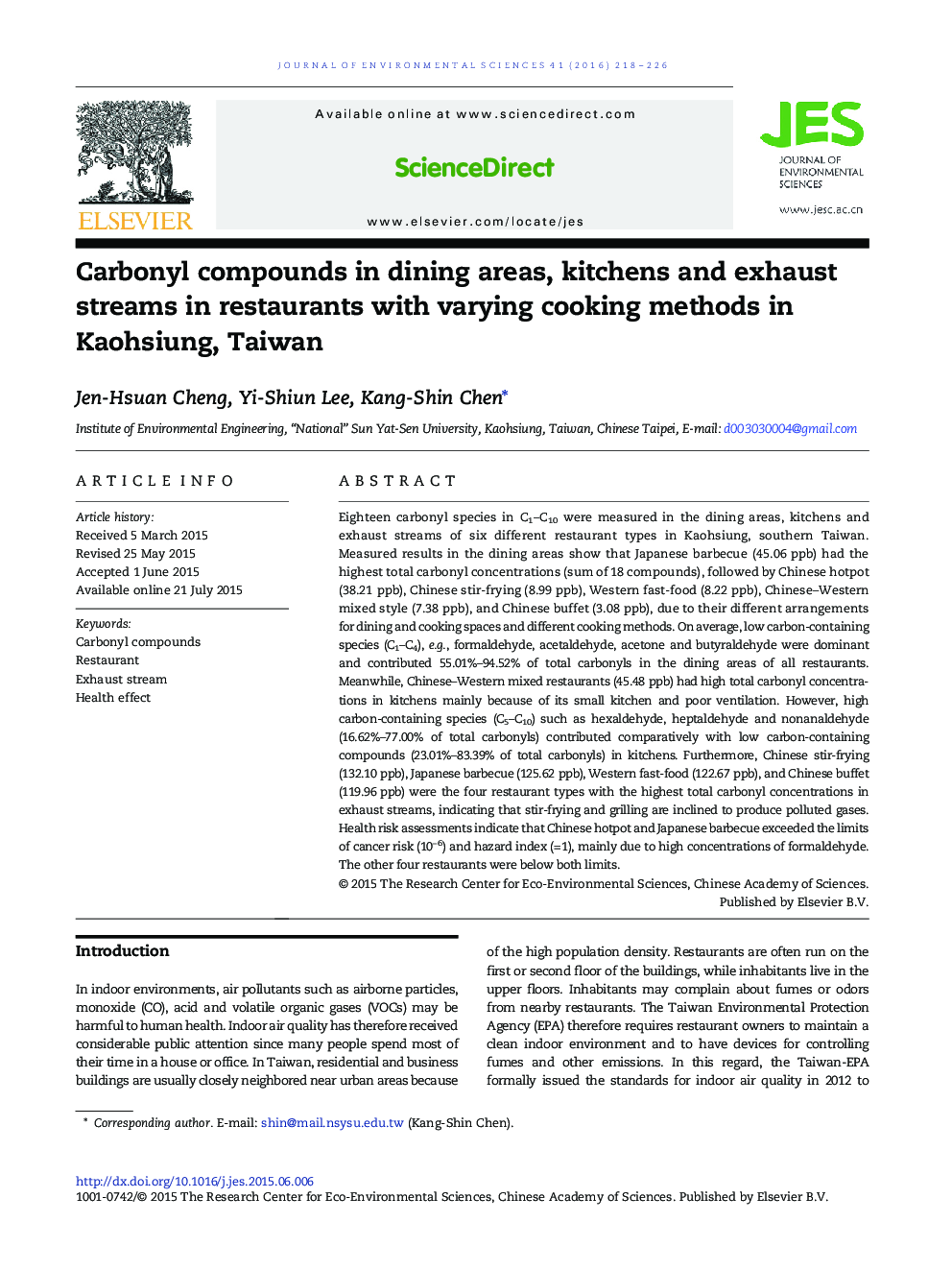| کد مقاله | کد نشریه | سال انتشار | مقاله انگلیسی | نسخه تمام متن |
|---|---|---|---|---|
| 4453711 | 1620812 | 2016 | 9 صفحه PDF | دانلود رایگان |

Eighteen carbonyl species in C1–C10 were measured in the dining areas, kitchens and exhaust streams of six different restaurant types in Kaohsiung, southern Taiwan. Measured results in the dining areas show that Japanese barbecue (45.06 ppb) had the highest total carbonyl concentrations (sum of 18 compounds), followed by Chinese hotpot (38.21 ppb), Chinese stir-frying (8.99 ppb), Western fast-food (8.22 ppb), Chinese–Western mixed style (7.38 ppb), and Chinese buffet (3.08 ppb), due to their different arrangements for dining and cooking spaces and different cooking methods. On average, low carbon-containing species (C1–C4), e.g., formaldehyde, acetaldehyde, acetone and butyraldehyde were dominant and contributed 55.01%–94.52% of total carbonyls in the dining areas of all restaurants. Meanwhile, Chinese–Western mixed restaurants (45.48 ppb) had high total carbonyl concentrations in kitchens mainly because of its small kitchen and poor ventilation. However, high carbon-containing species (C5–C10) such as hexaldehyde, heptaldehyde and nonanaldehyde (16.62%–77.00% of total carbonyls) contributed comparatively with low carbon-containing compounds (23.01%–83.39% of total carbonyls) in kitchens. Furthermore, Chinese stir-frying (132.10 ppb), Japanese barbecue (125.62 ppb), Western fast-food (122.67 ppb), and Chinese buffet (119.96 ppb) were the four restaurant types with the highest total carbonyl concentrations in exhaust streams, indicating that stir-frying and grilling are inclined to produce polluted gases. Health risk assessments indicate that Chinese hotpot and Japanese barbecue exceeded the limits of cancer risk (10− 6) and hazard index (= 1), mainly due to high concentrations of formaldehyde. The other four restaurants were below both limits.
Emissions of formaldehyde form Chinese hotpot (lift) and Japanese barbecue (right) restaurants.Figure optionsDownload as PowerPoint slide
Journal: Journal of Environmental Sciences - Volume 41, March 2016, Pages 218–226